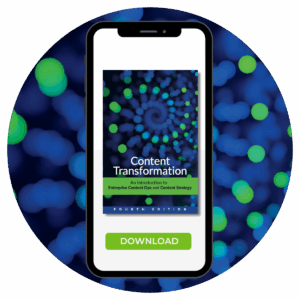From classrooms to clicks: the future of training content
AI, self-paced courses, and shifting demand for instructor-led classes—what’s next for the future of training content? In this podcast, Sarah O’Keefe and Kevin Siegel unpack the challenges, opportunities, and what it takes to adapt.
There’s probably a training company out there that’d be happy to teach me how to use WordPress. I didn’t have the time, I didn’t have the resources, nothing. So I just did it on my own. That’s one example of how you can use AI to replace some training. And when I don’t know how to do something these days, I go right to YouTube and look for a video to teach me how to do it. But given that, there are some industries where you can’t get away with that. Healthcare is an example—you’re not going to learn how to do brain surgery that someone could rely on with AI or through a YouTube video.
— Kevin Siegel








